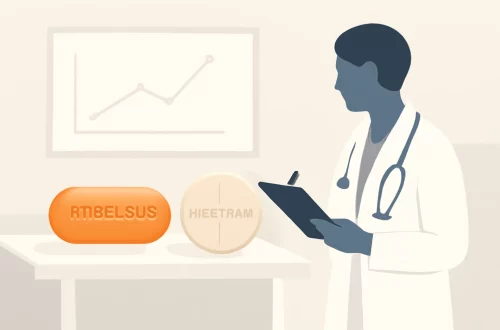
Understanding Dog Knotted Anal Behavior and Its Implications
Understanding the complex behaviors of dogs can be a fascinating yet perplexing journey for pet owners. While we often focus on their playful antics and loyal companionship, certain behaviors can raise eyebrows and questions. One such behavior is the phenomenon known as “knotted anal behavior,” which may be observed in various contexts among dogs. This behavior typically indicates a mix of natural instincts, social interactions, and potential health concerns.
Living with dogs means navigating their unique and often puzzling behaviors, which can sometimes lead to misunderstandings. As responsible pet owners, it is crucial to recognize and understand these behaviors rather than dismiss them. This not only enhances the bond between humans and their furry companions but also contributes to a healthier and happier life for our canine friends.
In this exploration, we will delve deeper into the intricacies of dog behavior, particularly focusing on knotted anal behavior. By shedding light on its origins, implications, and the underlying reasons, we aim to equip dog owners with the insights needed to address this behavior constructively. Whether it stems from instinctual drives or signals a potential health issue, understanding these canine quirks is essential for any dog enthusiast.
What Does Knotted Anal Behavior Mean?
Knotted anal behavior in dogs, often observed during mating rituals or social interactions, can seem puzzling at first glance. This behavior is typically characterized by a dog’s attempt to mount another dog, leading to a temporary physical connection known as a “tie.” During this phase, the male dog’s penis becomes engorged, creating a physical knot with the female’s vulva. This behavior is natural and is primarily linked to reproduction.
While this behavior is most commonly associated with mating, it can also manifest during play or as a display of dominance. Dogs, like many animals, communicate and establish their social hierarchies through various actions, including mounting. In some cases, even neutered males may exhibit this behavior, as it can stem from instinct rather than a desire to reproduce.
It’s essential to understand that while knotted anal behavior is primarily a natural instinct, it can also indicate underlying excitement or stress in certain situations. For instance, in a multi-dog household, one dog may attempt to assert dominance over others through this behavior. Observing the context in which the behavior occurs can provide valuable insights into your dog’s emotional state and social dynamics.
In addition to social signaling, knotted anal behavior can occasionally raise concerns about health issues. Dogs may engage in excessive mounting due to anxiety, hormonal imbalances, or even medical conditions affecting their reproductive systems. Therefore, pet owners should remain vigilant and consult a veterinarian if they notice any unusual patterns or if the behavior appears to be causing distress to the dog or others.
Understanding the Role of Hormones
Hormones play a significant role in a dog’s behavior, particularly when it comes to mating instincts and social interactions. Male dogs are influenced by testosterone, which drives many of their instinctual behaviors, including knotted anal behavior. This hormone not only affects their reproductive capabilities but also influences their social behaviors within a pack or household.
In unneutered males, the presence of testosterone can lead to heightened sexual behaviors, including mounting and the aforementioned knotting. Neutering can help mitigate these behaviors by reducing testosterone levels, but it doesn’t eliminate them entirely. Even neutered dogs may engage in mounting due to learned behaviors or social dynamics.
For female dogs, the influence of hormones can also be observed during their heat cycles. When in heat, females release pheromones that attract male dogs, often leading to mounting behaviors from males. This natural instinct ensures the continuation of the species, but it can also lead to confusion among pet owners unfamiliar with the signs of a female in heat.
However, hormonal influences are not limited to reproductive behaviors. Stress and anxiety can also trigger a surge of hormones that may cause dogs to engage in mounting or knotted anal behavior as a coping mechanism. Understanding the hormonal underpinnings of these behaviors allows pet owners to approach the situation with greater empathy and awareness.
If a dog exhibits sudden or excessive knotted anal behavior, it may be worth investigating potential hormonal imbalances. Consulting with a veterinarian can provide clarity and help determine whether medical intervention or behavioral modification is necessary.
Addressing Behavioral Concerns
When faced with knotted anal behavior, it is essential for dog owners to approach the situation calmly and constructively. Understanding the underlying reasons for this behavior is the first step toward addressing it effectively.
If the behavior appears to stem from dominance or social hierarchy, providing proper training and socialization can help. Positive reinforcement training methods can teach dogs appropriate behaviors while discouraging unwanted actions. For instance, redirecting a dog’s attention during mounting attempts can help establish more appropriate social interactions.
In cases where anxiety or stress is a contributing factor, creating a stable and secure environment for the dog is crucial. This may involve providing a safe space, engaging in regular exercise, and ensuring adequate mental stimulation to reduce stress levels. A well-balanced routine can help alleviate anxiety and decrease the likelihood of mounting behaviors.
In situations where knotted anal behavior is excessive or appears to be causing distress, consulting a veterinarian or a professional dog trainer may be necessary. They can assess the situation, identify any underlying health issues, and recommend appropriate behavioral interventions.
It is also important for dog owners to educate themselves about canine body language and communication. Understanding when a dog is feeling threatened or anxious can help prevent situations that may lead to unwanted behaviors. Recognizing the signs of stress, such as pacing, excessive barking, or changes in body posture, allows owners to intervene before a behavior escalates.
Ultimately, addressing knotted anal behavior requires a combination of understanding, patience, and proactive measures. By fostering a supportive and informed environment, dog owners can help their pets navigate social interactions more effectively.
When to Seek Professional Help
While many instances of knotted anal behavior can be managed through understanding and training, certain situations warrant professional intervention. If a dog exhibits this behavior excessively or inappropriately, it may indicate underlying health or behavioral issues that require expert evaluation.
Signs that professional help may be needed include persistent mounting that disrupts daily life, aggressive behaviors during interactions, or indications of pain or discomfort. If a dog appears distressed or unable to disengage from a mounting situation, it is crucial to consult a veterinarian or professional trainer.
Veterinarians can perform health assessments to rule out any medical conditions affecting a dog’s reproductive system or hormonal balance. In cases where stress or anxiety is suspected, they may recommend behavioral therapies or medications to help manage the situation.
Professional trainers can offer valuable guidance on modifying behaviors through targeted training techniques. They can assess the dog’s behavior in context and provide tailored strategies to address specific concerns, ensuring a healthier and more harmonious relationship between the dog and its owner.
Additionally, if a dog is newly adopted or has recently experienced changes in its environment, seeking professional help can facilitate smoother transitions. A trainer can help the dog adjust to new surroundings and social dynamics, minimizing stress and promoting positive behaviors.
In summary, while knotted anal behavior is often a natural part of canine interactions, it is essential to recognize when it may signal deeper issues. By remaining observant and proactive, dog owners can ensure their pets lead happy, healthy lives.
**Disclaimer:** This article is for informational purposes only and should not be considered medical advice. For any health-related concerns regarding your pet, please consult a qualified veterinarian.




